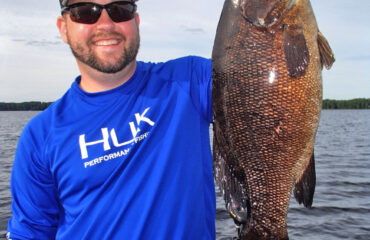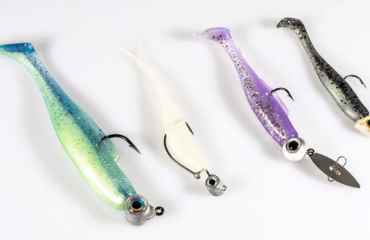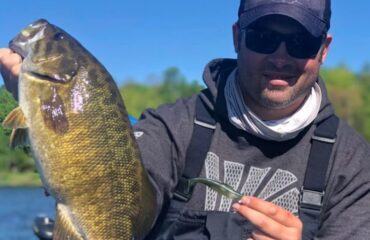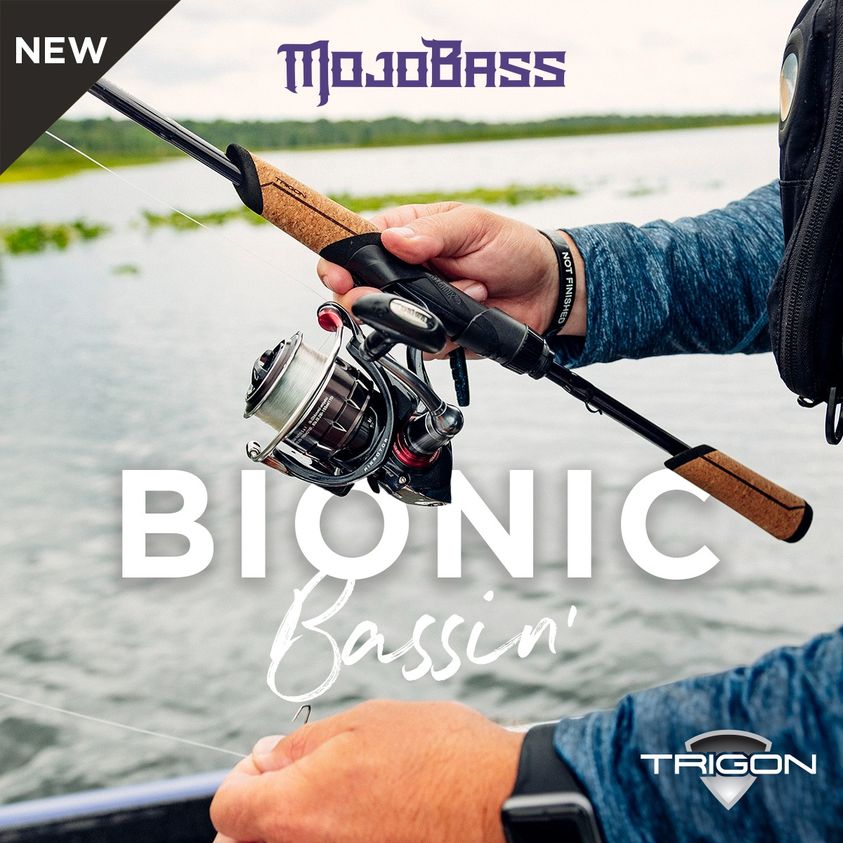Match The Hatch Rusty Crayfish
By Andrew Ragas
Smallmouth bass and rusty crayfish in northwoods inland lakes are on a collision course every summer. This predator and prey interaction often utilizes the same lake and river locations for habitat and feeding. Their connection as predator and prey is strong and unique, and shapes the ecosystems and food chains of ever fishery. On our northwoods lakes that are populated by them, rusty crayfish make up 60% to 80% of the smallmouth’s diet. There are so many present on some lakes that smallmouth can eat often and whenever they want.
Big smallmouth sizes and trophy statuses are achieved and maintained through a rich diet of over-abundant native and non-native rusty crayfish.
The invasion of crayfish in Wisconsin’s lakes during the 1980’s resulted in new species introductions of smallmouth that were previously not native to some lakes. For more than 20 years, their fisheries have flourished. How these fisheries reached this point dwells on the existence of a friend and foe; rusty crayfish. This invasive is responsible for many of the smallmouth fisheries we have today.
The History of Rusty Crayfish in Northern Wisconsin Lakes
Rusty crayfish were illegally introduced to northwoods waters in the 1960’s by live bait dealers. Since then, they’ve expanded their range and migrated into other lakes and rivers from secondary introductions by anglers using them for live-bait. Although native to the Ohio River basin and the states of Ohio and Kentucky, rusty crayfish continue to spread into many northern lakes and streams where they cause a variety of ecological problems.
Rusty crayfish populations in northern Wisconsin lakes are on the great decline due to the prolific feeding of trophy smallmouth bass, Wisconsin’s successful inland bass management plans, and an unknown crayfish virus that wiped out numbers on many lakes from 2011-2015.
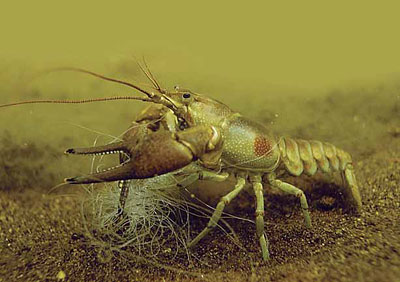
Eric Engbretson photograph
Although today’s infestation levels are low compared to the 1990’s and 2000’s era, remnant populations prefer hard bottom lake and near-shore areas that offer rocks, logs, or other debris as cover. Bottom types may be clay, silt, sand, gravel, or rock. They generally do not dig burrows other than small pockets under rocks and debris, although there have been reports of more substantial burrows. Unlike some species, rusty crayfish need permanent lakes or streams that provide suitable water quality year-round.
The rusty crayfish infestations of northern Wisconsin lakes have caused a variety of negative environmental and economic impacts. This aggressive species often displaces native or existing crayfish species.
Rusty crayfish can increase fish predation on native crayfish in a variety of ways. They force native species from the best hiding places. As the native crayfish try to swim away from a fish or rusty crayfish attack, this makes them more vulnerable to capture by fish. Rusty crayfish, on the other hand, assume a claws-up defensive posture that reduces their susceptibility to fish predation. Also, rusty crayfish are larger and have larger claws than most native species, which results in fish preying upon native species over rusty crayfish.
In addition to native species displacement and elimination, the destruction of vegetation has been the most serious impact, hurting walleye, muskie, northern pike, and panfish fisheries. Rusty crayfish are prolific in underwater deforestation, chopping up and eating aquatic plants. They eat substantially more than native species, grow larger, hide less often from predators, and reach high population densities.
Rusty crayfish are prolific weed and vegetation destructors, and are invasive species in the north country. Their abundance is a detriment to weedgrowth as they are habitat destructors, but their presence is a benefit to smallmouth bass fisheries.
To eliminate them and control their populations, Wisconsin researchers realized that restoring lakes with healthy populations of smallmouth bass, and protecting them with trophy regulations, would help solve the infestation problems. These studies were best evidenced on Sparkling Lake in Vilas County, and Metonga Lake in Forest County.
Enhanced fish predation, through regulations that protect trophy smallmouth bass, effectively control and help eliminate rusty crayfish today.
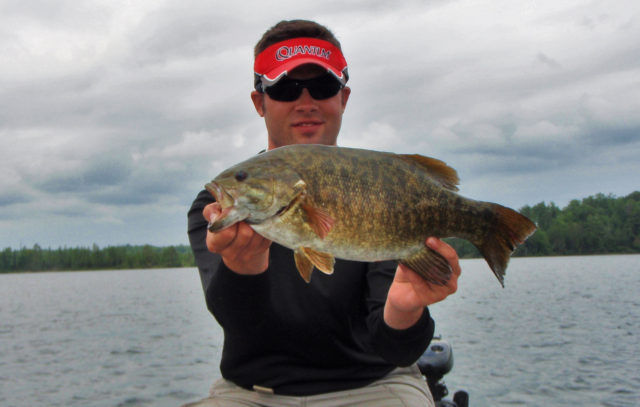
When Predator and Prey Collide
On lakes proliferated with crayfish, smallmouth feeding locations will vary according to the prey species populating the lake. It’s not so much as what smallmouths favor, but it’s more what the crayfish forage favors. They are going to go where the food is. To catch them, jigging with crayfish imitating plastics is the most effective method.
Because this summer pattern is influenced by crayfish movements and location, shallow water environments in depths between 5 to 10 feet are the most ideal starting points. Usually, these shallow depths encompass luxurious crayfish cover such as laydowns and downed wood, fish cribs, gravel, and rocky shoals. In addition to near-shore locations, crayfish frequently inhabit mid lake rock bars that top off at similar depths.
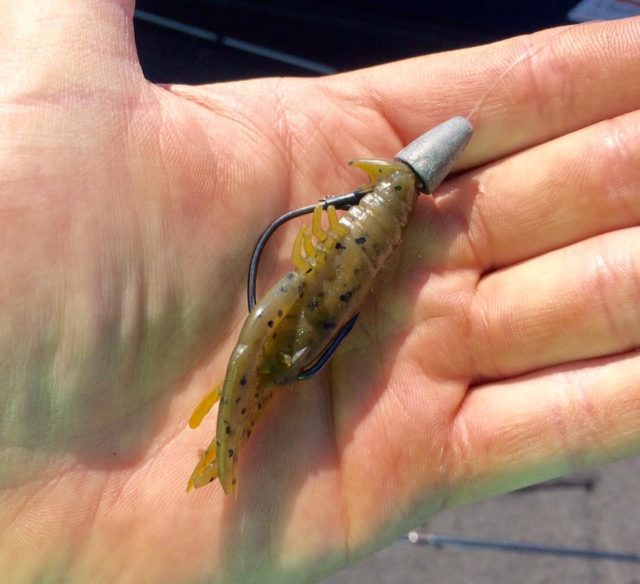
When I taught myself to smallmouth fish 15 years ago, I learned my ways with the Yum Craw Bug. It caught some of my best smallmouth early on in my career on lakes, rivers and flowages. Then for a long time, it went on a retirement for me.
These last two summers, it re-entered my fishing rotation and is now one of the boat’s better options for catching smallmouth during the crayfish molting period, and when bass are heavily feeding on crayfish during the July and August months.
The 2.5″ Craw Bug fishes well on spinning gear with smaller 1/8 oz. and 1/4 oz. football heads. This smallie snack is a fabulous finesse fishing jigging option. It may also be worked with tube jig inserts, as well as Texas Rigged with my favorite tungsten bullet weights and a Trokar Tournament Tube Hook in 1/0 and 2/0 sizes. The 3.5″ Craw Bug meanwhile is fished in similar ways, except with heavier jigs and weights.
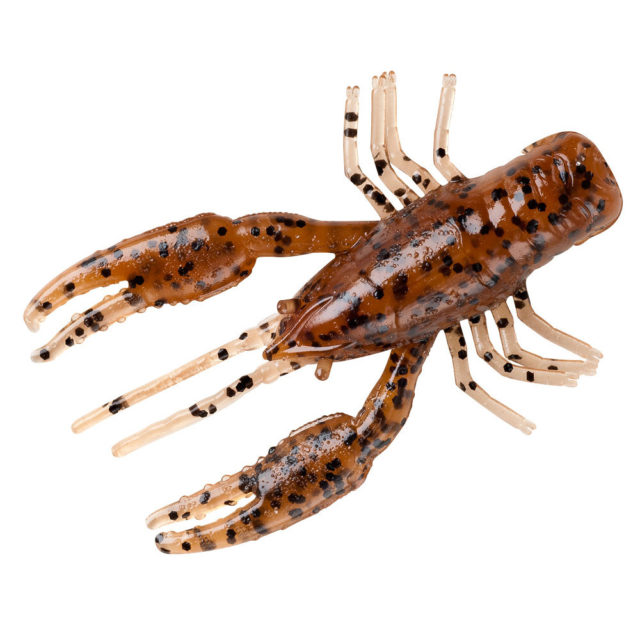
When it was introduced in the mid 2000’s, it seems to me that more color options were available back then. My box of craw bugs is mainly comprised of colors and unique shades of crayfish that are currently not in YUM’s color lineup or available for sale anywhere on the web.
Built to satisfy the hunger of smallmouth, the Yum Crawbug delivers an ultra-realistic crawfish imitation is able to fool the most seasoned large bass. Designed with three-dimensional detailing never-before-seen in a soft plastic, the Yum Crawbug features a super-soft texture that makes it incredibly lifelike. Molded with a hollow body and flapping appendages, the Yum Crawbug perfectly imitates a fleeing crawfish as it scurries along the lake floor.
Keeping your baits looking as natural as possible, in appearance and movement, is the trick to catching smallmouth in this situation. Scaling down with natural baits that have the abilities to match the hatch is a technique I select for clear water lakes, and fisheries with a prey overabundance. Natural colors representing crayfish such as bronze, orange, brown, pumpkin, sand, smoke, and motor oil are excellent choices, as is a natural more subtle approach to working the bait such as swimming, dead sticking, and dropping.
Andrew Ragas splits time between the Chicago area and Wisconsin’s Northwoods. Based in Minocqua, WI, he specializes in trophy bass fishing and offers guided trips from May thru October. While big bass is the passion, he dabbles in multi-species as well. He may be visited online at www.northwoodsbass.com





